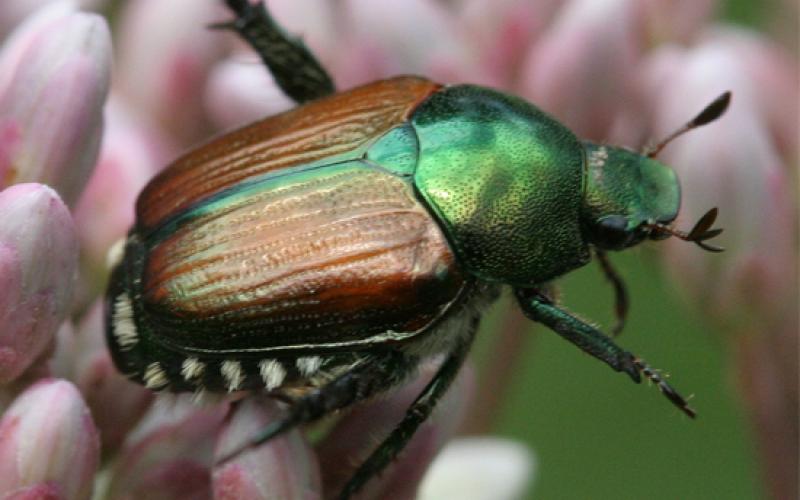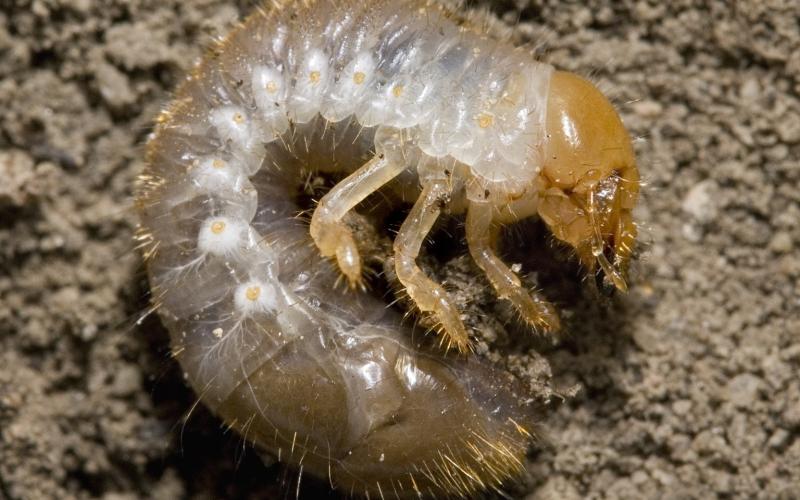Scientific name: Popillia japonica Newman
Native range: Japan
At Risk
Many different plants are consumed by Japanese beetle adults, some of their favorites include roses, grapes, apple and basswood. Larvae feed on the roots of grasses and can be a problem for yards and turf. Read about advice on managing Japanese beetle from the University of Minnesota.
Japanese beetle can be a significant landscape pest and difficult to tolerate, particularly when they first become abundant in an area. Since larvae feed primarily on the roots of grass, Japanese beetle is most prevalent in urban environments. However, Japanese beetle can also be a pest in soybeans and other agricultural crops as well.
Distribution
Japanese beetle is present in most of the eastern United States and has been present in Minnesota for decades. Many people first became aware of Japanese beetle when they were very abundant in the Twin Cities metro area in 2011.
Biology
Adult Japanese beetles become active in Minnesota in late June/early July. Although they are able to eat many different kinds of plants, for anyone who has experienced Japanese beetle, it is clear that they have some plants they prefer over others. Adult beetles can be found congregating on these plants and defoliating them in a manner described as “skeletonizing” because they leave the leaf veins intact but eat all of the tissue from between them. Adult beetles lay eggs in the soil and the larvae live in the soil feeding on the roots of grass until they pupate into adults beetles and emerge the following year.
Look-Alikes
The most likely thing to be mistaken for Japanese beetle is the false Japanese beetle which is similar but can be distinguished by coloration and the lack of white hair tufts at the posterior end of the abdomen. Rose chafers can also be mistaken for Japanese beetle but lack the white patches of hair along the abdomen entirely.
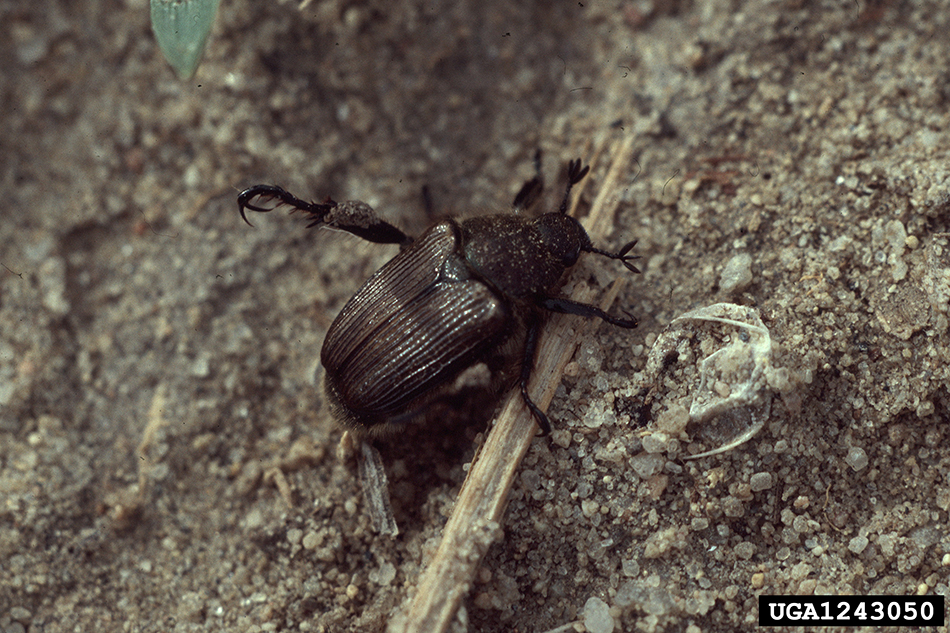
| 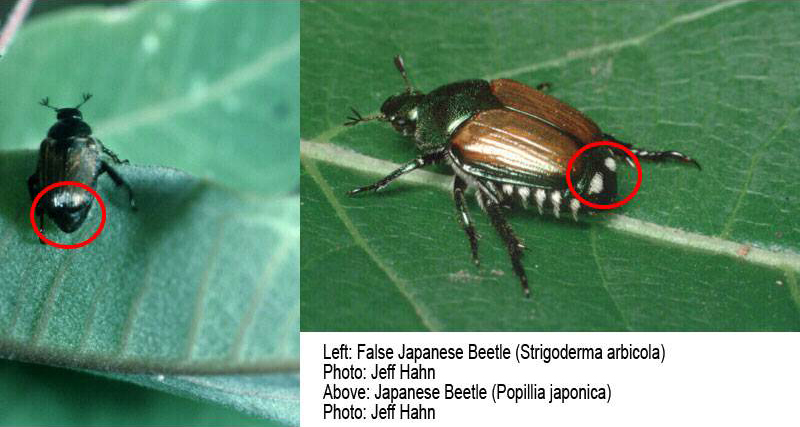 | 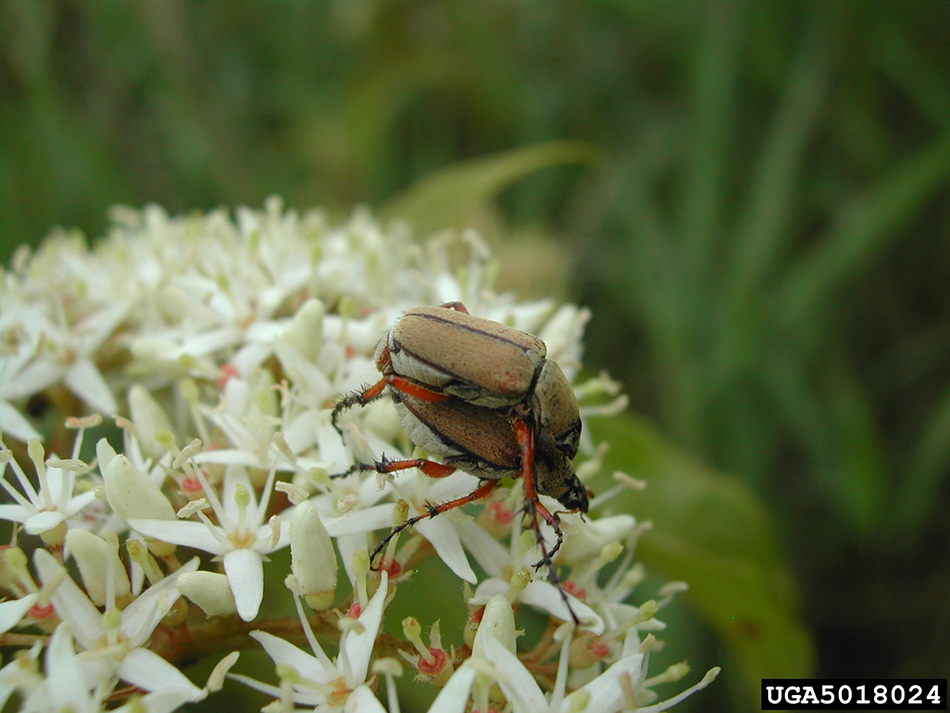 |
Pest Status
In Minnesota, Japanese beetle has been found in many counties but is only known to be abundant in some. There are no restrictions related to the movement of Japanese beetle within Minnesota, but there are restrictions related to the movement of Japanese beetle out of Minnesota.
NEW: Conditions related to movement of plant products that could carry Japanese beetle between states are set by the Japanese Beetle Harmonization Plan which has recently been updated, read about the updated plan.
Smarty Plants Podcast

Discover Smarty Plants, the Minnesota Department of Agriculture's podcast that digs into the fascinating world of invasive species. Join expert guests as they share insights and solutions to protect our environment and agricultural resources. Visit Smarty Plants and start listening today.
